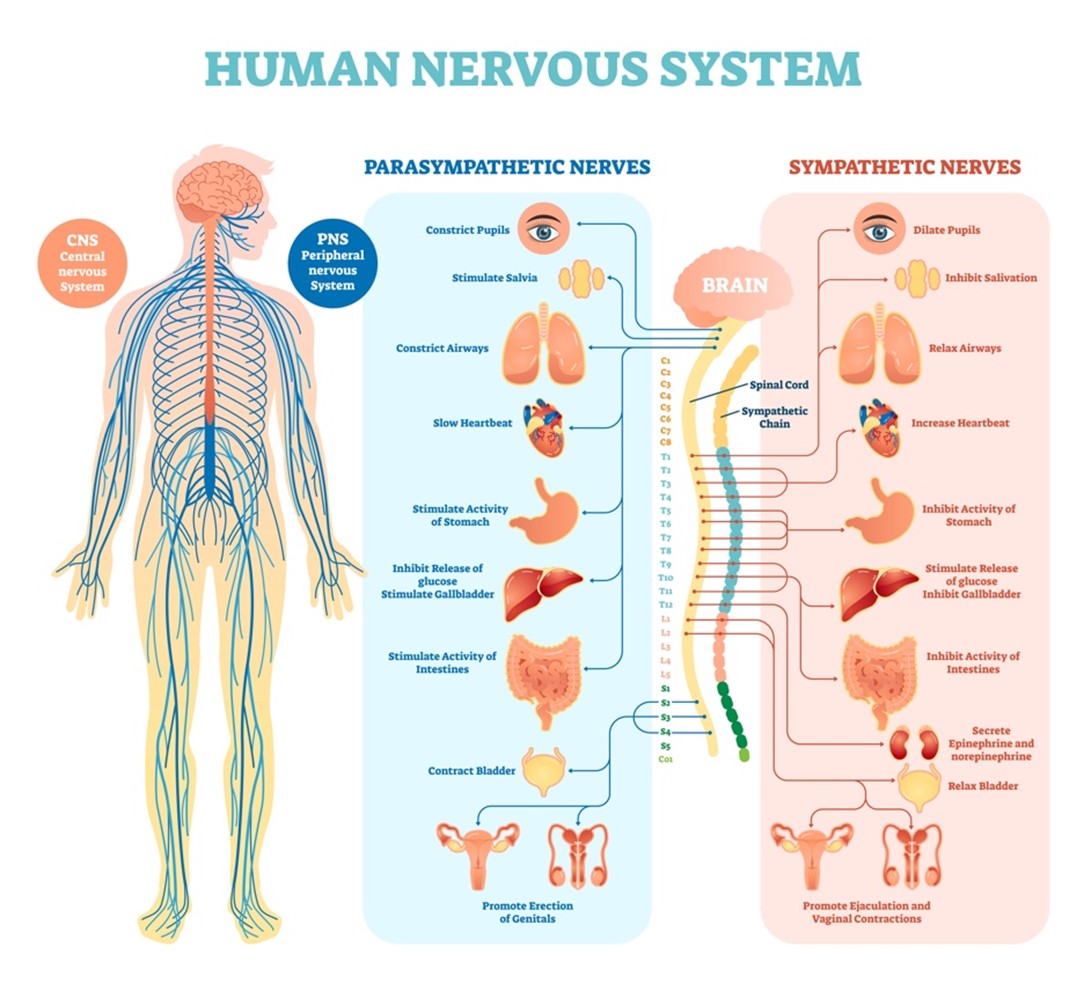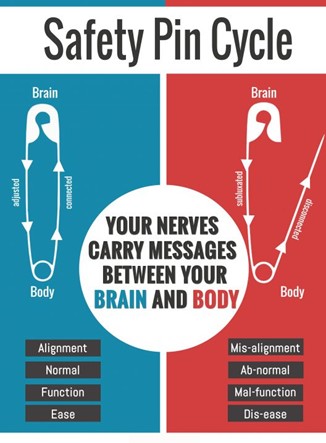Many people assume that chiropractic care only benefits those suffering from back, neck pain, or headaches. However, research has proven there is a strong link between chiropractic and the nervous system. Your nervous system consists of your brain, spinal cord, and nerves— which together coordinates and controls every function of your body. This is exactly why our nervous system is, without question, one of the most important systems in our body. Virtually every cell, tissue, organ, and system of your body is controlled and regulated by your nervous system.
To help better understand how chiropractic affects the nervous system, it is important to understand some science and anatomy.
The human body is comprised of two sets of nervous systems: the central nervous system (CNS) and the peripheral nervous system (PNS). The CNS consists of the brain and spinal cord, which are protected by the skull and vertebrae. Meanwhile, the PNS consists of all the other nerves in the body that branch out from the spinal cord.

Your Spine and Chiropractic
You could say that the spinal cord is the highway where information travels back and forth from the body to the brain. This is why when the spinal cord is damaged, the person is likely paralysed from the injured area down, as the nerves in the area cannot send or receive information from the brain to the body – or back from the body to the brain. This broken pathway prevents the brain from directing the body to move, resulting in paralysis.
Now that you understand how your nervous system functions, you will better understand how chiropractic can affect your nervous system and your body.
Chiropractic restores the body’s brain and body connection by removing nerve interference called subluxations. A chiropractor specifically identifies subluxations through various tests which can be done by hand and using technology. Then, the chiropractor removes the subluxations by performing specific chiropractic adjustments that result in improved spinal movement and function and enhanced nervous system communication. The safety pin cycle below perfectly explains the connection.

Recent Studies
The latest research study suggests that the changes we see in the brain when we adjust the spine occur in the prefrontal cortex (PFC). The PFC is the part of the brain which functions as its conductor.
Research shows that when we adjust the spine, we alter activity in the prefrontal cortex. The study showed a change in brain function by almost 20% on average.1 The prefrontal cortex is the area in the brain where higher learning and cognition happens.

In summary: Healthy Spine = Healthy Nervous System = Healthy Life.
Because adjusting the spine makes changes to the brain – and the brain coordinates all function in the body – we recommend people get a check-up to see how their spine and nervous system is functioning.
If you would like more information or would like to have your spine and nervous system checked, contact Dr. Cindy Lam at Provolution Health on 6299 2660 or at info@provolutionhealth.com.au.
References:
Lelic, D., Niazi, I.K., Holt, K., Jochumsen, M., Dremstrup, K., Yielder, P., Murphy, B., Drewes, A., and Haavik, H. (2016). Manipulation of dysfunctional spinal joints affects sensorimotor integration in the pre-frontal cortex: A brain source localization study. Neural Plasticity, 16. https://doi.org/10.1155/2016/3704964
